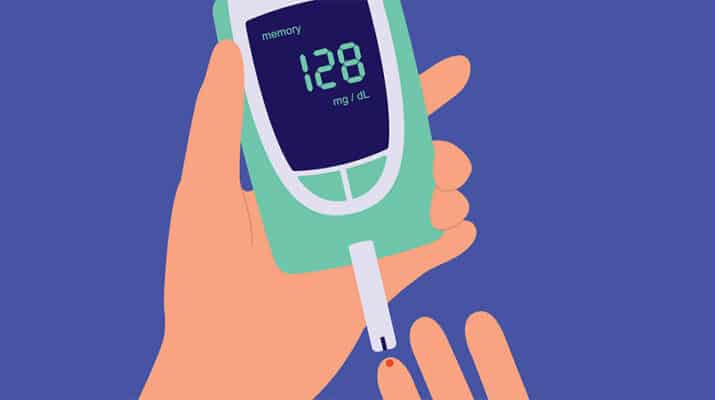By Deborah Jeanne Sergeant
Managing Type-2 diabetes as an older adult is a little more complicated than with younger people. Often by this stage in life, other health issues have arisen. Doctors tell diabetic patients to exercise. However, by this stage of life, more limited mobility from arthritis or injuries can make it more challenging to work out. The care for other health conditions can make it difficult to take on all of the care necessitated by diabetes, such as managing blood pressure and cholesterol, smoking cessation, annual eye exams, careful foot care, annual urine and blood tests for kidney health and dietary changes.
Seeking help from a certified diabetes educator can assist in managing the various aspects of the condition. Dietary changes may be most difficult of all, but one of the most needful, and a dietitian or a certified diabetes educator can help. Some people may find it difficult to make in-office visits.
“If they are comfortable with doing things over the phone or are tech savvy enough to use a phone camera, they can achieve the same things as in the office with diabetes of education,” said Noelle Citarella, registered/certified dietitian nutritionist at Buffalo Nutrition and Dietetics, PLLC in Buffalo. “First lesson on the glucometer should be in-person, but they can still achieve blood sugar management through virtual follow-ups.”
Most insurers still cover virtual visits.
Some older adults find difficult the dietary changes brought by Type-2 diabetes, particularly if they’ve never cooked much or at this point in life, find cooking difficult.
“The diabetes educator can tailor specifics,” Citarella said. “The Hungry Man frozen dinner looks like the equivalent of a meal, but looking at the fiber and protein, it’s not balanced.”
She helps clients find meals with non-starchy vegetables that won’t spike blood sugar. Healthy Choice brand offers one example.
“The biggest take-home message is any small changes you make shows big results,” said Samantha Paolini, registered dietitian in practice in Buffalo. “Good nutrition is so important with diabetes management. Limiting sugary beverage intake and having three meals a day is a good step.”
Ideally, pairing high fiber meals with protein helps stabilize blood sugar. Paolini recommends whole grains, whole fruits and vegetables, beans and lentils.
“Balance those with a lean protein source like chicken, poultry and lean red meat,” she added.
To stick with the healthful diet, it helps to stock up on easily prepared foods that are more healthful, such as steam-in-the-bag frozen vegetables and brown rice. Eating half a bag of steamed vegetables makes it easy to not waste food, as the other half may be eaten at another meal.
Cooking ahead and freezing individual portions can also help on days when cooking from scratch is too tiring.
“These tips also help with portion size,” Paolini said. “If you make a big pot of soup and you freeze portions, it’s there for you.”
My Plate for Diabetes indicates filling half of a standard nine- or 10-inch plate with non-starchy vegetables raw or cooked, and the other half of the plate with lean protein and starchy foods, about one-quarter each.
Any snacks should pair carbohydrate sources with protein sources, such as fruited yogurt, cheese or cottage cheese with a whole grain cracker or peanut butter on slices of apple.
Exercising regularly can help maintain blood sugar stability.
Paolini tells clients to “do what you can physically.”
Swimming, elliptical workouts and senior yoga all represent forms of exercise gentle for people with arthritis. A good goal could be to increasing activity to a goal of 150 minutes a week minimum, broken into 30-minute brisk walks five days a week along with weight training two days a week to improve lean body mass.
Paolini also tells people with diabetes to go to their regular check-ups with their physicians. They should also keep their healthcare provider abreast of any changes in diet, medication, supplements and over-the-counter items.
Although it may be more challenging for older adults to maintain healthy blood glucose levels if they have comorbidities, poor health or cognitive decline, Paolini said that making these changes can positively impact quality of life.

